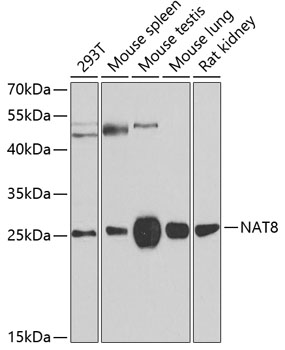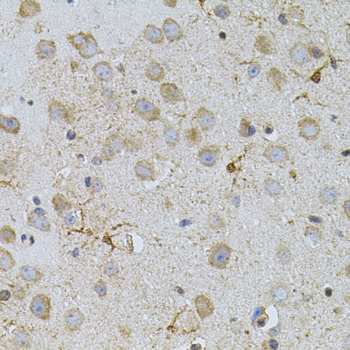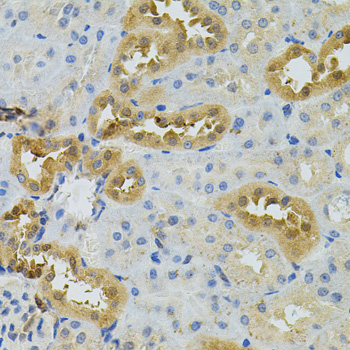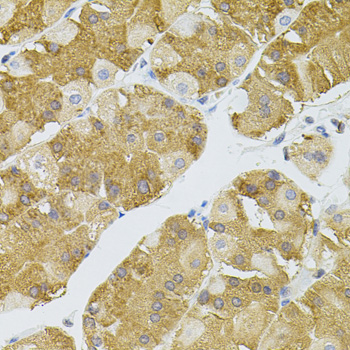-
Product Name
NAT8 Polyclonal Antibody
- Documents
-
Description
Polyclonal antibody to NAT8
-
Tested applications
WB, IHC
-
Species reactivity
Human, Mouse, Rat
-
Alternative names
NAT8 antibody; ATase2 antibody; CCNAT antibody; CML1 antibody; GLA antibody; Hcml1 antibody; TSC501 antibody; TSC510 antibody; N-acetyltransferase 8 antibody
-
Isotype
Rabbit IgG
-
Preparation
Antigen: Recombinant protein of human NAT8
-
Clonality
Polyclonal
-
Formulation
PBS with 0.02% sodium azide, 50% glycerol, pH7.3.
-
Storage instructions
Store at -20℃. Avoid freeze / thaw cycles.
-
Applications
WB 1:500 - 1:2000
IHC 1:50 - 1:100 -
Validations

Western blot - NAT8 Polyclonal Antibody
Western blot analysis of extracts of various cell lines, using NAT8 antibody at 1:500 dilution.Secondary antibody: HRP Goat Anti-Rabbit IgG (H+L) at 1:10000 dilution.Lysates/proteins: 25ug per lane.Blocking buffer: 3% nonfat dry milk in TBST.Detection: ECL Basic Kit .Exposure time: 90s.

Immunohistochemistry - NAT8 Polyclonal Antibody
Immunohistochemistry of paraffin-embedded mouse brain using NAT8 antibody (40x lens).

Immunohistochemistry - NAT8 Polyclonal Antibody
Immunohistochemistry of paraffin-embedded rat kidney using NAT8 antibody (40x lens).

Immunohistochemistry - NAT8 Polyclonal Antibody
Immunohistochemistry of paraffin-embedded human stomach using NAT8 antibody (40x lens).
-
Background
Acetylates the free alpha-amino group of cysteine S-conjugates to form mercapturic acids. This is the final step in a major route for detoxification of a wide variety of reactive electrophiles which starts with their incorporation into glutathione S-conjugates. The glutathione S-conjugates are then further processed into cysteine S-conjugates and finally mercapturic acids which are water soluble and can be readily excreted in urine or bile. Alternatively, may have a lysine N-acetyltransferase activity catalyzing peptidyl-lysine N6-acetylation of various proteins. Thereby, may regulate apoptosis through the acetylation and the regulation of the expression of PROM1. May also regulate amyloid beta-peptide secretion through acetylation of BACE1 and the regulation of its expression in neurons.
Related Products / Services
Please note: All products are "FOR RESEARCH USE ONLY AND ARE NOT INTENDED FOR DIAGNOSTIC OR THERAPEUTIC USE"
